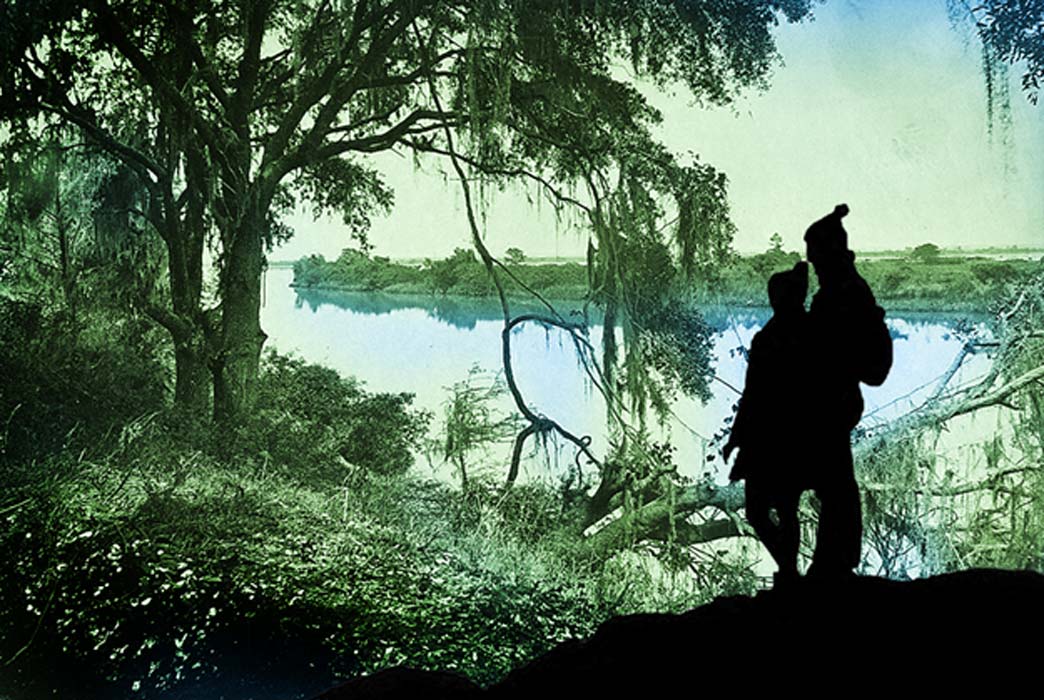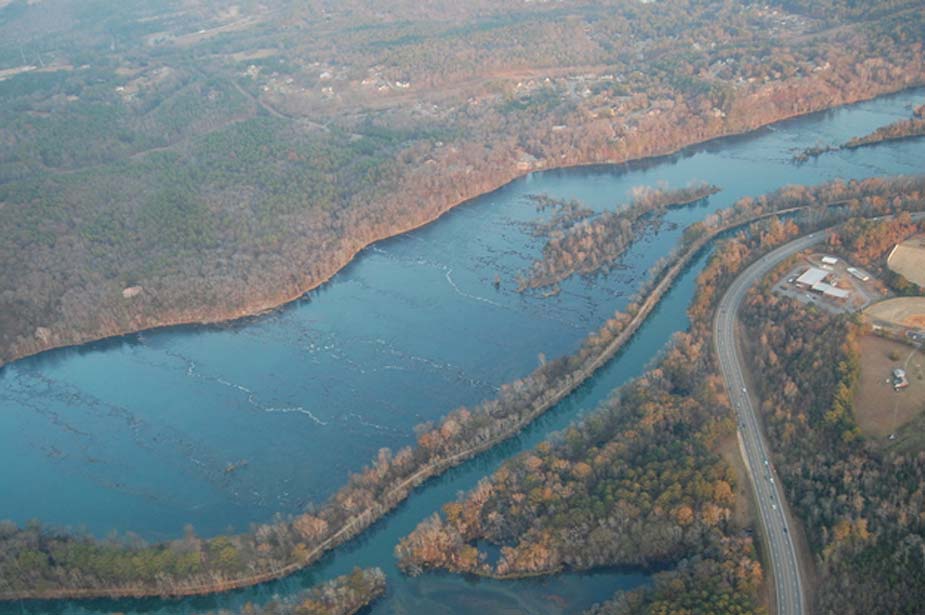
Prehistoric Romeo and Juliet Lived Apart: But Why? The People of the Shoals and The People of the Hills
Just north of Augusta, Georgia, USA, near what is called the Fall Line of the Savannah River, lies Stallings Island. It has given its name to the culture that sparked the second great American invention. The first was the Clovis point; the second was fiber-tempered pottery.
Some 3,700 years ago, an inventive people flourished here. They produced the first permanent shell-fishing culture, the first settled community, and the first example of fire-hardened, fiber-tempered pottery in North America.
On Stallings Island, archeologists excavated large shell-middens, basically, mounds where people threw their discarded shells after eating a dinner of mussels and clams. Embedded in these prehistoric dump sites were carved bone pins, stemmed projectile points, stones used for boiling cooking water, and lots and lots of decorated, broken pottery. The size of the middens indicates that people lived here for a long time. Pollen, fish bones, plant refuse, and shells from all seasons indicate a year-round, permanent village.

Savannah River and the Augusta Canal, Augusta, Georgia, USA. (Debs/CC BY 2.0)
Who Were These Folks?
Stallings Island has been a popular digging site since 1861. Back then, people didn't know much about preserving such places. A lot of amateurs visited the place to dig up all the collectible (and saleable), arrowheads and pottery shards they could find. They didn't care if they trashed the place; they were interested in profit. But despite all this, there was much for the professionals to discover.
And that is exactly what has happened. One of the best popular books written on the subject is People of the Shoals, by Kenneth E. Sassaman. His research led him to believe that the people who lived here probably came from the west:
Legend held that they arose from the place where the progenitor, Mother Turtle, first poked her head up from the waters that once covered the earth. Children learned that this place lay to the west of the Great Mountains, though few in recent generations had the chance to travel that far...For centuries the people thrived in harmony with nature. Eventually, as their numbers grew and the resources dwindled, the balance was disrupted, and it became time to leave.
He goes on to describe how these people first encountered the upriver Parris Island culture, whom he calls the People of the Hills because they lived in the northern hill county. Since the Parris Island folks preferred a mobile existence and lived on the river only part of the year, there were more advantages than disadvantages to the two groups getting along.
People of the Shoals – and the People of the Hills
For centuries these two groups of people, the People of the Shoals and the People of the Hills, lived side by side. They probably traded back and forth and surely must have intermingled in other, more traditional, ways as well. The story of Romeo and Juliet is, after all, as old as the human race. ("Don't you dare run off with a hill person! Your mother and I would be mortified!")




